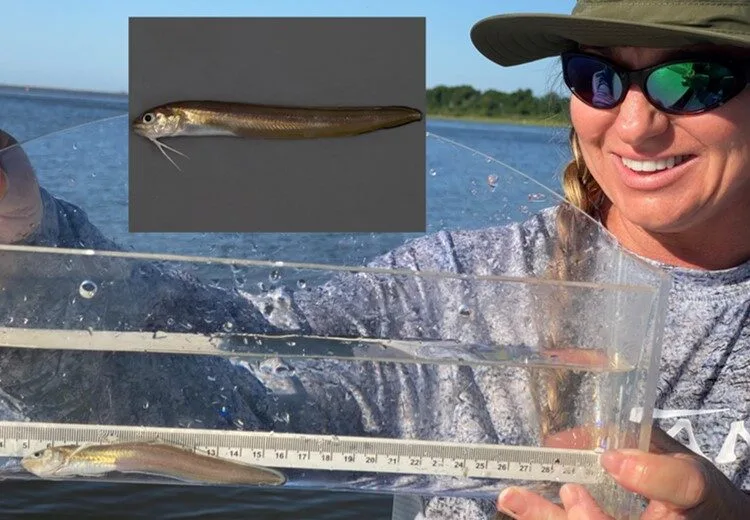With its shiny elongate, snake-like body, it is understandable why the striped cusk-eel (Ophidion marginatum) might be mistaken for a true eel at first glance. The uniquely shaped fish, however, belongs to a group of fishes known as cusk-eels (family Ophidiidae) whose name is derived from the Greek origin ‘ophis’ meaning “snake” or “serpent.”
A striped cusk-eel’s coloration is subtle yet striking; grayish green on the back, fading into gold or bronze sides and a pale belly. Their dorsal and anal fins are continuous with a dark edge and as their name implies, they have two to three prominent stripes that run the length of their body. Adult male striped cusk-eels can be distinguished from the otherwise similar looking females by the presence of a prominent crest on the back of their head (aka nape). Their pelvic fins are unique in that they are located on their lower jaw below their eyes. These sensory structures (like the chin barbels in other fish) aid these bottom-dwelling fish in finding prey particularly at night when they are most active. While rarely seen because of its secretive nature, striped cusk-eels are common estuarine fish along the U.S Atlantic and Gulf of America coastline. They commonly inhabit Georgia’s shallow coastal waters, especially in areas with soft substrates where they can burrow and hide.
Fun fact: Striped cusk-eels are considered soniferous, meaning they produce sound. Males have specialized muscles and a modified swim bladder that allow them to create a drumming or clicking noise, especially during courtship.



